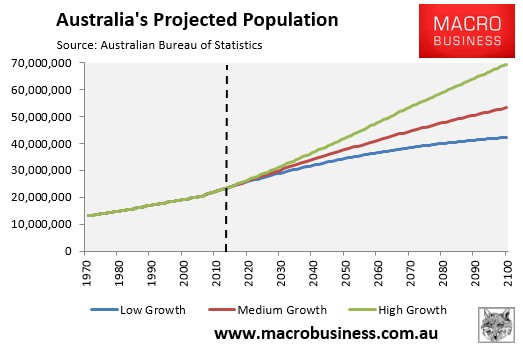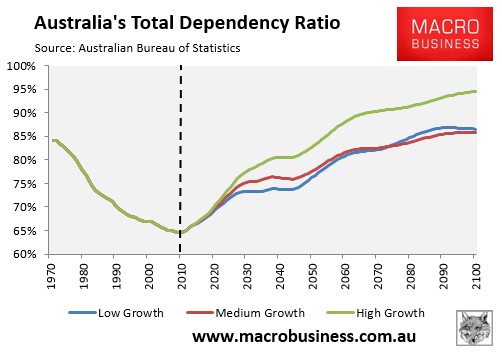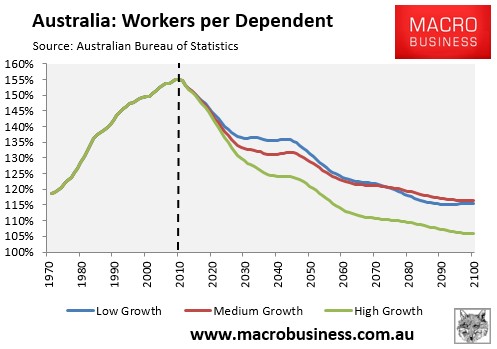
Earlier this month, Business Spectator’s Rob Burgess published an article strongly supporting his boss, Rupert Murdoch’s, plea that Australia maintain its high immigration intake, which he labelled an economic “no brainer”. Burgess’ evidence-free arguments were debunked comprehensively by me, which I hoped was the last I would hear from him on this issue.
Today, Burgess is back lambasting those whom question the merits of a Big Australia and claiming that high immigration is essential to curb the impacts of an ageing population:
It’s a good thing the Bureau of Statistics didn’t release its latest population growth estimates before the September 7 election. Had they done so, we’d have been treated to a load of Chicken Little malarkey about over-populated Australia being ‘swamped’ with migrants.
As a political meme, ‘overpopulation’ works. As the sound basis for policy making, it’s utterly insubstantial.
Australian cities are fast becoming overcrowded and dysfunctional – true – but that is a result of lousy policy making, not too many Australians overall.
…as reports from both the Productivity Commission and Grattan Institute in the past week have highlighted, Australia desperately needs new, young, Aussies in order to sustain current levels of prosperity (or levels even close to them).
Without a bit of in-filling lower down on our demographic profile, the top-heavy bit will soon be asking for more healthcare and benefits than the budget can afford, and there will be too few working-age Australians to pay more taxes to shore things up…
It’s a shame that Burgess had not read my detailed post earlier today breaking down the ABS’ latest population projections. For if he had, Burgess would have learned that Australia’s total dependency ratio – defined as the ratio of the non-working population, both children (<20 years old) and the elderly (over 65 years old), to the working age population – is worst under the ABS’ “high growth” (Panel A) scenario, thereby comprehensively debunking his claim that high immigration is required to “sustain current levels of prosperity” (see below charts):



And to add insult to injury, my view is supported by the Productivity Commission, which in its submission to the former Minister for Population argued that higher immigration is utterly ineffective in alleviating the effects of an ageing population:
…several studies, including some undertaken by the Commission, indicate that policy-induced changes to Australia’s population are unlikely to significantly affect the ageing trends.
Improvements in longevity are the major cause of population ageing over the long run. In recent projections, Commission researchers estimated that an increase in the long-run total fertility rate from 1.85 to 2.10 births per woman — even if it could be achieved — would be associated with only a 1.1 percentage point reduction in the proportion of people aged over 65 by 2051.
Similarly, substantial increases in the level of net overseas migration would have only modest effects on population ageing and the impacts would be temporary, since immigrants themselves age. The Commission has estimated that an increase in annual net migration from 150 000 to 300 000 would lower the proportion of those aged 65 or over by less than 3 percentage points by 2044-45. As an illustration ofthe challenge, the Commission showed that delaying an increase in the dependency ratio by 40 years would require a net migration-to-population ratio of 3 per cent per year, leading to a population of around 85 million by 2044-45.
It follows that, rather than seeking to mitigate the ageing of the population, policy should seek to influence the potential economic and other impacts.
As noted earlier today, the only way to mitigate the effects of population ageing is through: (1) greater productivity growth; (2) higher workforce participation; (3) tightening eligibility requirements for entitlements, such as the aged pension, aged care, and subsidised health care; and (4) reducing superannuation concessions for higher income earners.
Perhaps Burgess should think about these facts the next time he proposes to write an article arguing for a higher immigration intake.

